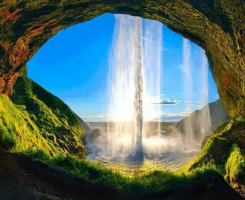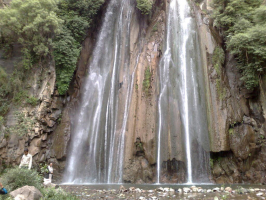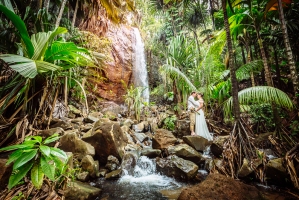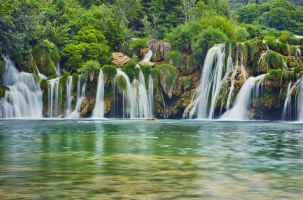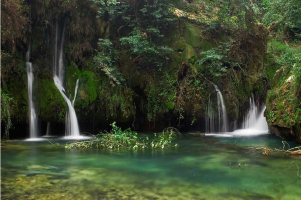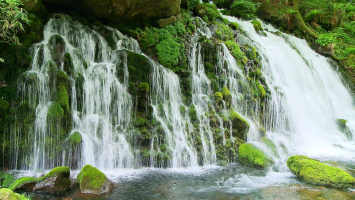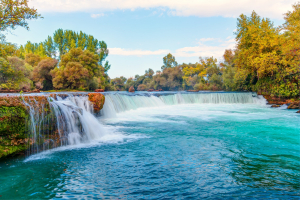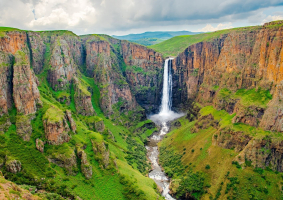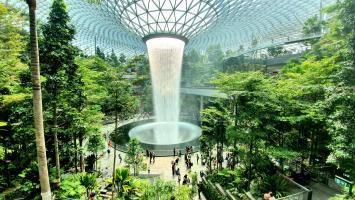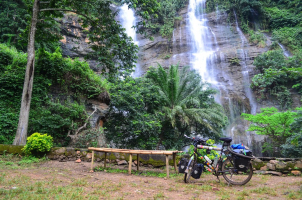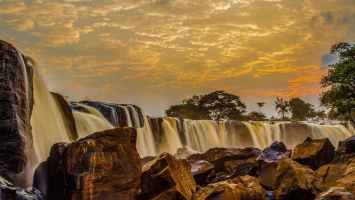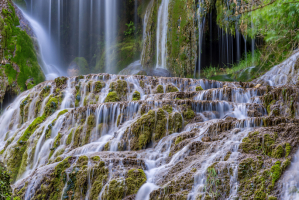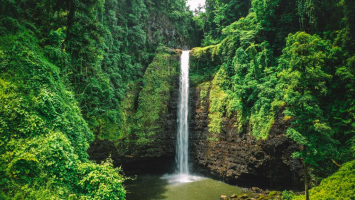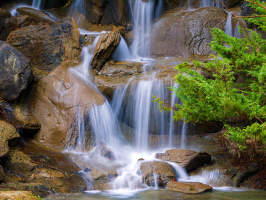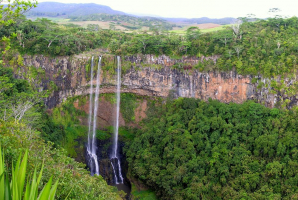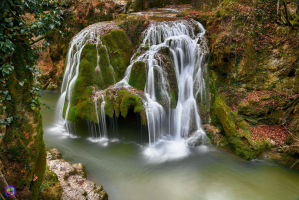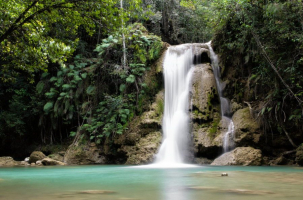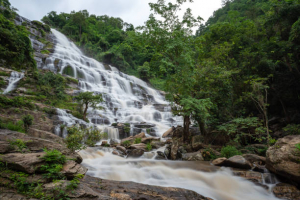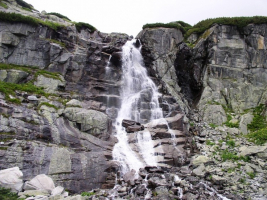Top 15 Most Beautiful Waterfalls in India
Are you trying to find India's most beautiful waterfalls? Strong waterfalls provide witness to nature's magnificent creations. Their energy, music, and ... read more...insanity inspire humans with their beauty. Here is a collection of Indian waterfalls that will astound you beyond belief. Let's find out now!
-
In India's Karnataka state's Mandya District, there is a waterfall known as Shivanasamudra Falls. One of the first hydroelectric generating plants in Asia was built there in 1902 along the Kaveri River, which serves as its border with Mandya. The Kaveri River's Shivanasamudra Waterfall is situated there. The Deccan Plateau's rocks and ravines are traversed by the river as it runs, creating waterfalls. From July to October, visitors can visit this waterfall because this is when the flow of the waterfall is at its greatest and creates an incredibly spectacular scene.
It's a frequent myth that the left segment of the Shivanasamudra waterfall is known as Gaganachukki while the right segment is known as Bharachukki. In actuality, Bharachukki and Gaganachukki waterfalls are a few kilometers apart. This is because the Kaveri River itself has split into western and eastern tributaries a few kilometers to the south. While the eastern branch produces the Bharachukki waterfall, the western branch produces the Gaganachukki double waterfall. The Shivanasamudra watchtower offers the best views of the Gaganachukki waterfall. The majority of the pictures of the twin waterfalls were taken from there. Gaganachukki Falls can be reached in another way from Darga Hazrath Mardane Gaib.
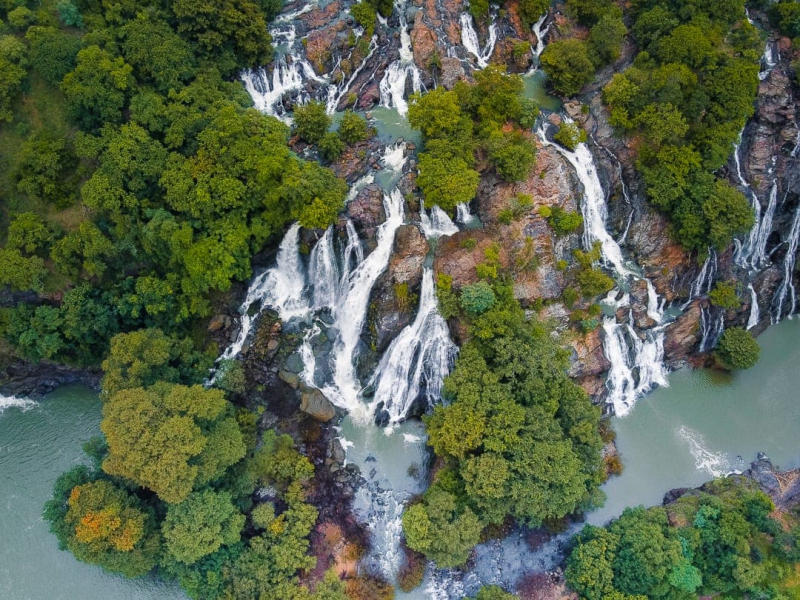
Shivanasamudra Waterfall 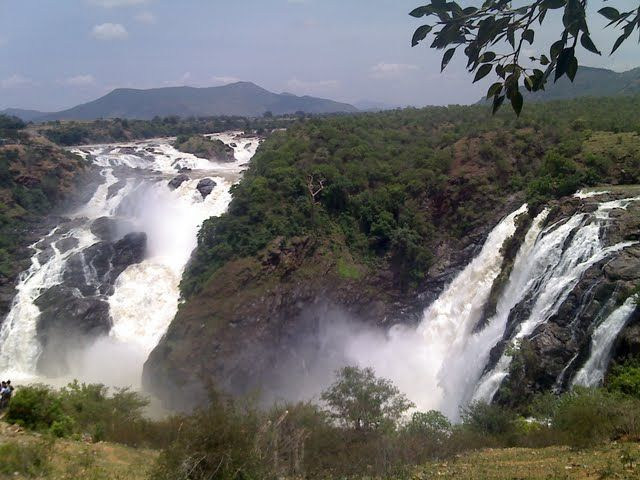
Shivanasamudra Waterfall -
Elephant waterfall is located in Upper Shillong, Meghalaya, 12 kilometers from Shillong city. It is one of the most beautiful and well-known waterfalls in Northeast India. Elephant falls, a mix of three rivers is a renowned tourist site in Shillong. The falls' original Khasi name is Ka Kshaid Lai Pateng Khohsiew, which translates to "three-step waterfall".
Elephant Waterfall's first step is an example of a horsetail-punchbowl waterfall. The first step is very wide and concealed behind the trees. The second step, on the other hand, is quite tamed and appears insignificant throughout the winter (and dry months). The third step is the tallest and most magnificent, with crystal clear water cascading over rough rocks of various forms. The waterfall's sides are surrounded by thick foliage and plants.
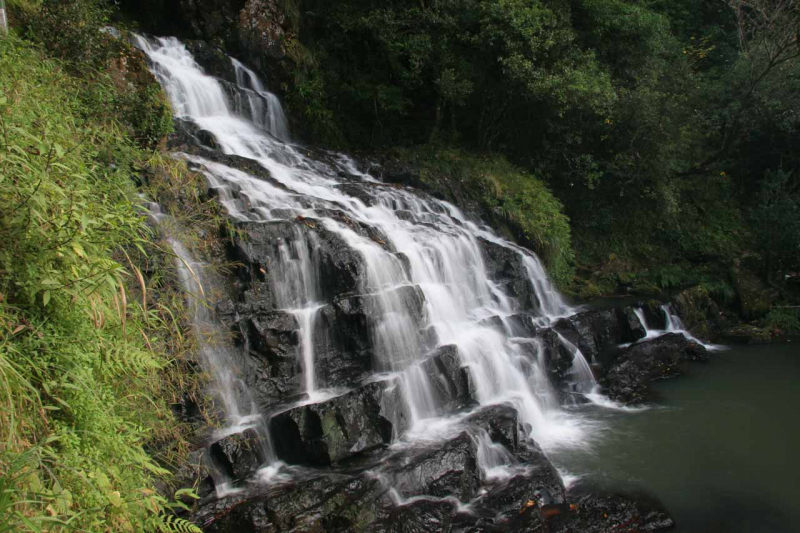
Elephant Waterfall 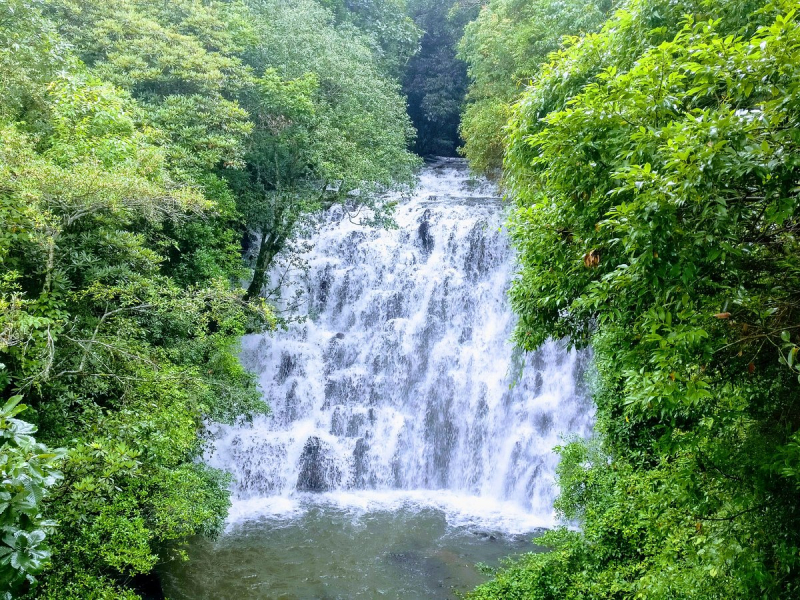
Elephant Waterfall -
Dudhsagar Waterfall (also known as the "Sea of Milk") is a four-tiered waterfall on the Mandovi River in the Indian state of Goa. It is located on the Belgavi-Vasco Da Gama rail route, some 46 kilometers east of Madgaon and 80 kilometers south of Belgavi, and about 60 kilometers by road from Panaji. With a height of 310 meters (1017 feet) and an average width of 30 meters, Dudhsagar Falls is one of India's tallest waterfalls.
The waterfall is located among the Western Ghats in the Bhagwan Mahaveer Sanctuary and Mollem National Park. The falls commemorate the end of the Mandovi River's journey from the Western Ghats to Panjim, where it joins the Arabian Sea. The location is bordered by deciduous forests with diverse wildlife. To some locals, this waterfall is also known as Tambdi Surla. During the dry season, the falls are not particularly stunning; however, during the monsoon season, the falls are fed by rains and generate a massive force of water.
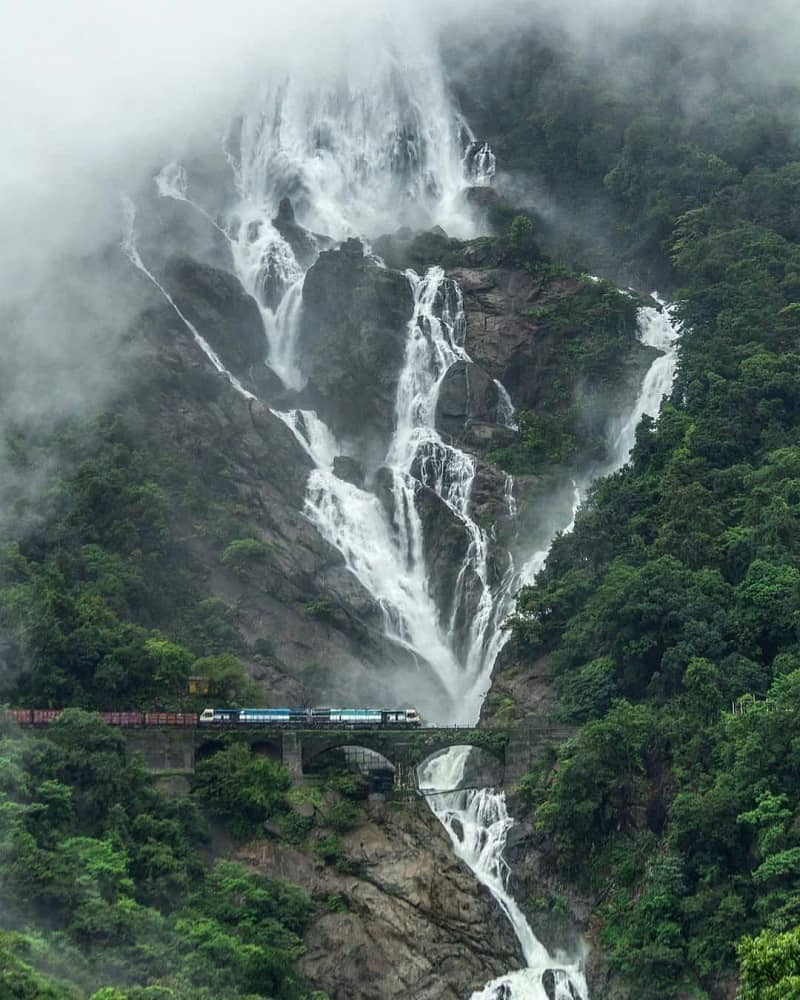
Dudhsagar Waterfall 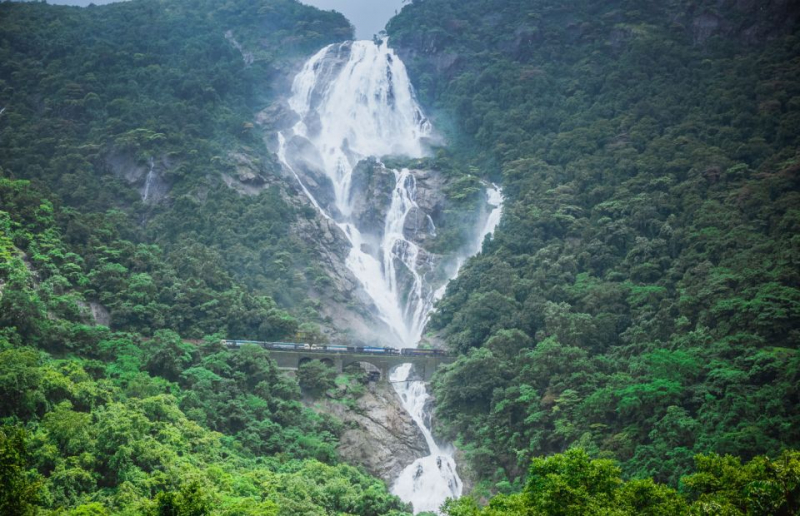
Dudhsagar Waterfall -
Athirappilly waterfall is located on the Chalakudy River in Athirappilly Panchayat, Chalakudy Taluk, Thrissur District, Kerala, India. It originates from the upper regions of the Western Ghats at the entrance to the Sholayar mountains. It is Kerala's largest waterfall, at 80 feet tall. It's only a short drive from Athirappilly to the Vazhachal falls, which are surrounded by dense green forests and home to numerous endangered and rare flora and fauna.
The journey from Chalakkudy to Athirappilly Falls is marked by winding roads, little settlements, and beautiful green forests. The peak of the waterfall is accessible through a concrete walkway that winds through dense bamboo clusters. The path from Angamaly passes through an Oil Palm Reserve at Ezhattumugham tourism resort. The bottom of the falls can be reached through a steep tight trail or a large stained way. The falls draw visitors from all around India, especially during the monsoon season (June–September). Every year, over 7 million tourists visit the falls.
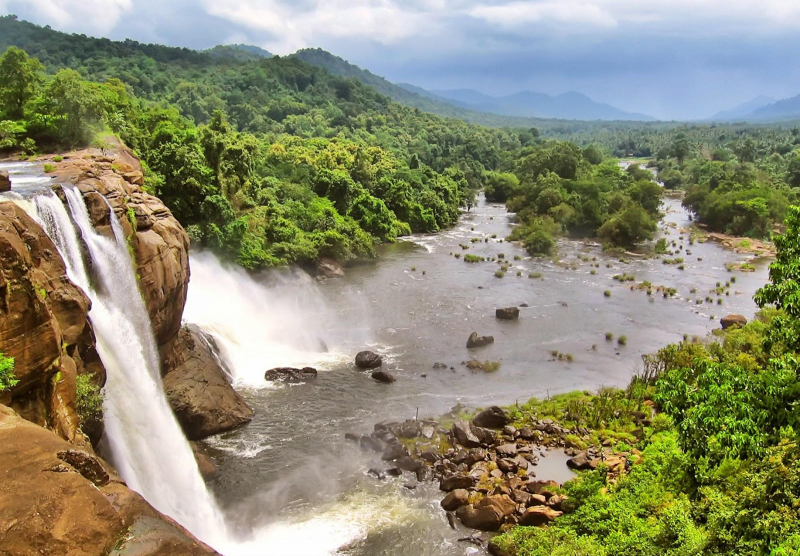
Athirappilly Waterfall 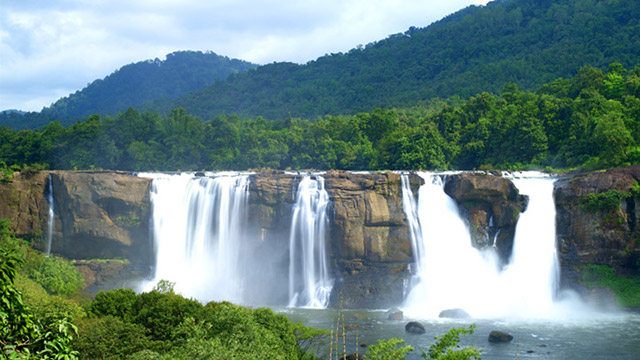
Athirappilly Waterfall -
The Bhagsu Waterfall is possibly the most well-known tourist attraction in Dharamshala, attracting visitors who want to bask in the splendors of nature and spend some quiet minutes in peace and solitude. The Bhagsunag Waterfall is located on the main route between Mcleodganj and Dharamshala and is a great place to picnic with family and friends. The famed Bhagsunath Temple is the main draw here.
The waterfall begins at the base of the Dhauladhar Valley, which is also a holy site. The stream also goes through the famed Bhagsunath Temple before falling down. During the monsoon season, the Bhagsu Fall reaches its pinnacle of splendor and majesty, with water falling from a height of roughly 30 feet and looking mesmerizing and stunningly beautiful. The cafés and coffee houses nearby serve delicious cuisine and light refreshments, and tourists especially appreciate sitting down and sipping a cup of coffee while seeing the stunning Bhagsunag Waterfall. Bathing in the waterfall is also feasible, however, the water can be too cold for the average human body at times.
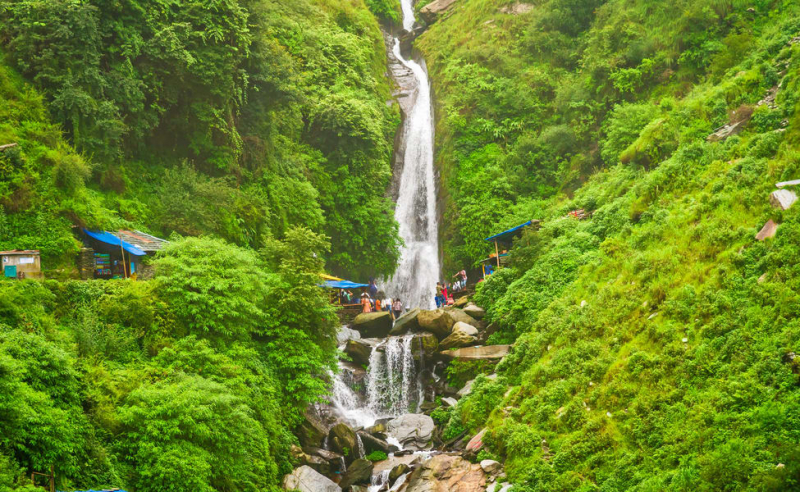
Bhagsu Waterfall 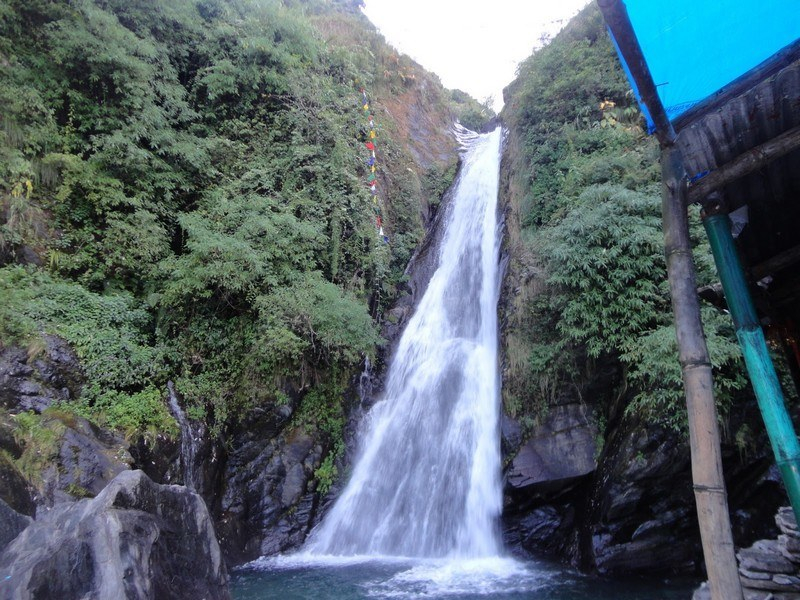
Bhagsu Waterfall -
Soochipara Falls, popularly known as Sentinel Rock Waterfalls in Vellarimala, Wayanad, India, is a three-tiered waterfall. Forests of deciduous, evergreen, and montane species surround it. The 15-20-minute drive from Meppadi to Sentinel Rock Waterfalls, known locally as Soochipara ("Soochi" means "Needle" and "Para" means "Rock"), offers vistas of several Wayanad tea fields. Sentinel Rock Waterfalls is 200 meters (656 feet) tall and has a rock-climbing cliff wall. The water from Soochipara Falls flows into the Chulika River, also known as the Chaliyar River after passing through the Velarimala Hills near Cherambadi (Tamil Nadu) in Kerala.
When visitors arrive at the parking area, they must go through a security check at the entry to ensure they are not carrying any plastic. It is a 10-15 minute walk to the waterfall, and the water flow is lower during the summer, making it easier to reach the rocks where the waterfall is. Its beauty, intensity, sound, and lunacy inspire the creation of Indian music and poetry.
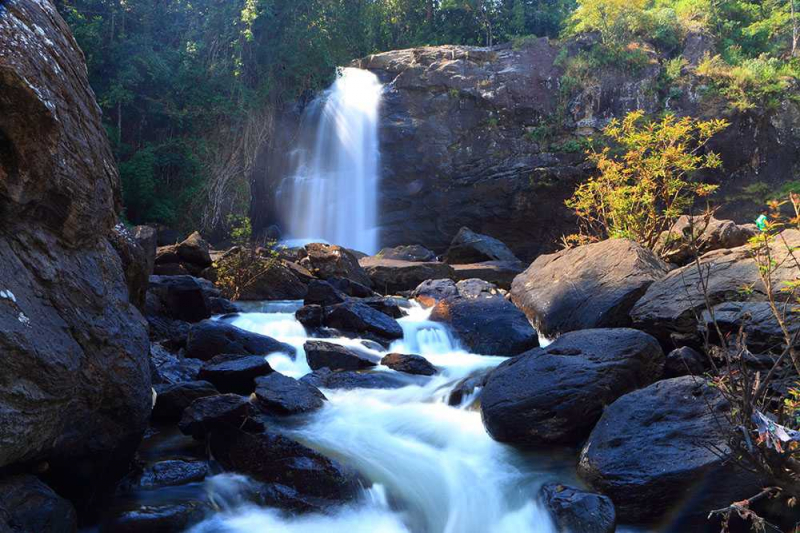
Soochipara Falls 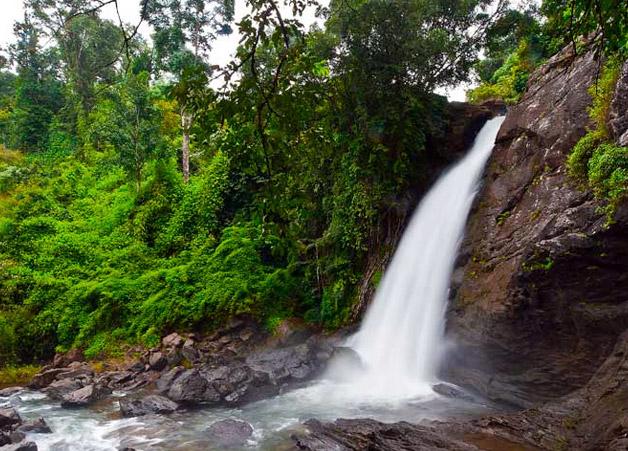
Soochipara Falls -
Jog Falls is a waterfall on the Sharavati River in the Shivamogga District of Karnataka, India. It is India's third-highest plunge waterfall. It is a segmented waterfall that transforms into a plunge waterfall depending on the amount of rain and the season. The falls are popular with tourists, and the waterfall database ranks them 36th in the list of free-falling waterfalls, 490th in the list of waterfalls by total height, and 128th in the list of single-drop waterfalls in the world.
Jog Falls is formed by the Sharavati, which drops 253 m (830 ft), making it the third-highest waterfall in India after the Nohkalikai Falls in Meghalaya, which drops 335 m (1,099 ft), and the Dudhsagar Falls in Goa, which drops 310 m (1,020 ft). The neighboring Linganamakki Dam, which spans the Sharavati River, is linked to the waterfall. The power station has been in service since 1948 and has a capacity of 120 MW, making it one of the largest hydroelectric stations in India at the time and a minor supplier of electricity for Karnataka now.
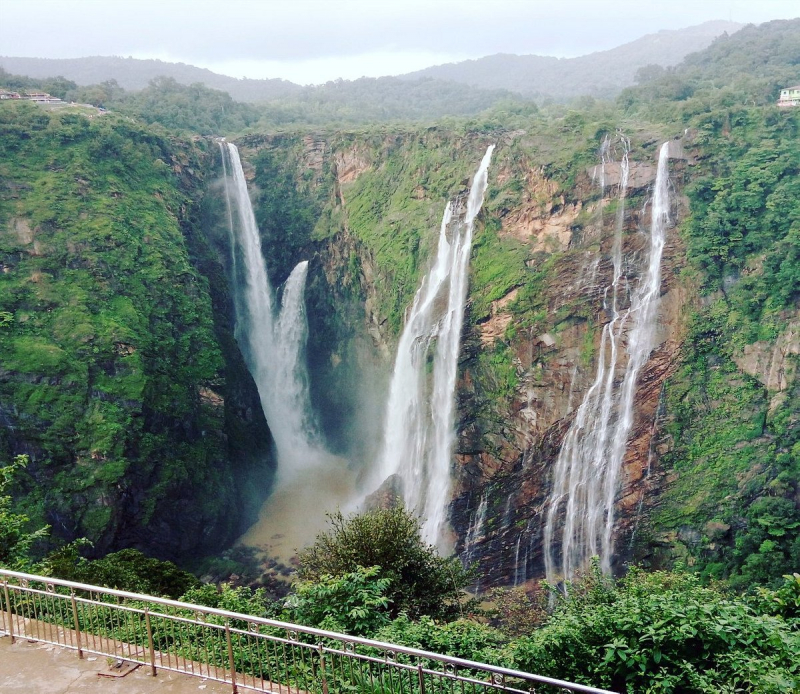
Jog Falls 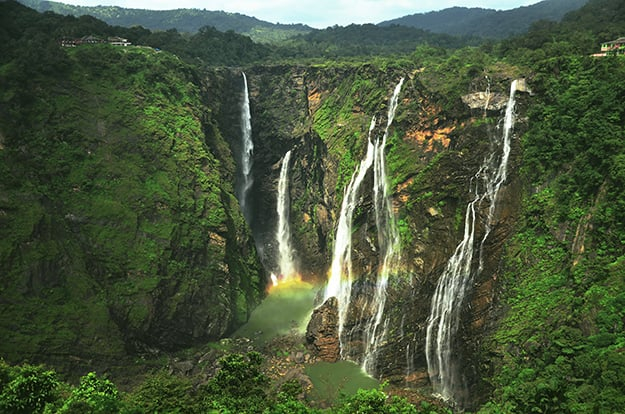
Jog Falls -
Nuranang Falls (also known as Bong Bong Falls) is a 100-meter-high waterfall in Arunachal Pradesh's Tawang district. It is one of the most beautiful waterfalls in this section of the country, yet many visitors are unaware of it. It is located about 2 kilometers from Jang on the road connecting Tawang and Bomdila, hence it is also known as the Jang Falls. A modest hydroelectric plant near the base generates electricity for local purposes. The Nuranang river flows from the Sela Pass's northern slopes. It flows into the Tawang River just below the waterfall.
A well-known urban legend holds that the Nuranang River and Nuranang Falls were named for a native Monpa girl named Nura who had aided Rifleman Jaswant Singh Rawat, recipient of the Maha Vir Chakra (posthumous) during the Sino-Indian War of 1962, before being captured by the Chinese. Jaswant's heroic actions actually took place in less heroic conditions, and no woman would fit in there. The name Nuranang might have been given long before 1962. Tanhai Tanhai Tanhai, a song from the 1997 film Koyla starring Bollywood superstar Madhuri Dixit, and Sangetser Lake brought it to public attention. It was the first state-produced video to be featured in a Bollywood film.
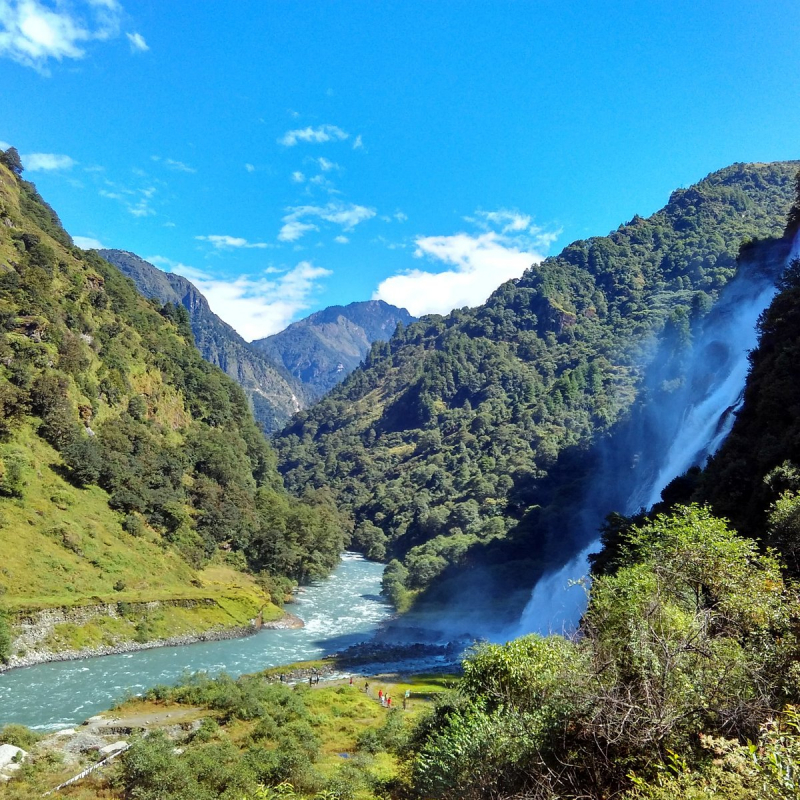
Nuranang Falls 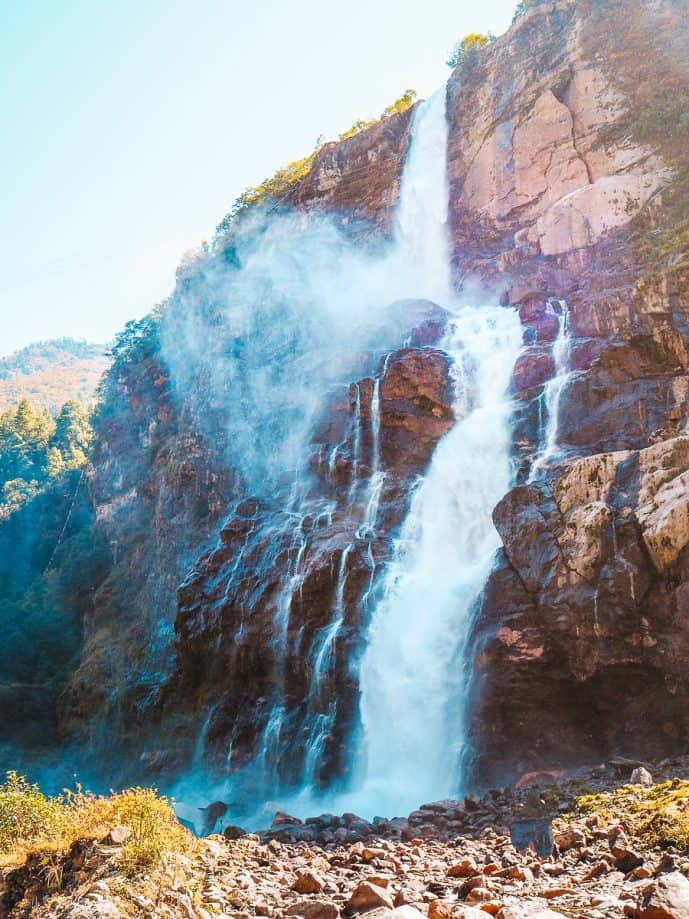
Nuranang Falls -
One of India's tallest waterfalls, Nohkalikai Waterfall is barely 5 kilometers from the major town. This waterfall, which cascades from a height of 1100 feet, is one of Cherrapunji's most well-liked tourist destinations. The Nohkalikai waterfall, which cascades down into a pool-like structure, may be seen from a vantage position after driving through a high tableland and doing a short climb.
This waterfall is situated close to Cherrapunji, one of the wettest places on Earth, in the Indian state of Meghalaya. Nohkalikai Falls is fueled by rainwater gathered at the top of a very small plateau, and their output declines from December to February during the dry season. A plunge pool with unusually green water can be found below the falls. The greatest time to visit Nohkalikai is during the monsoon season when the falls are at their full potential. Visitors may take in a panoramic view of the waterfalls and the verdant surroundings from the observation gallery.
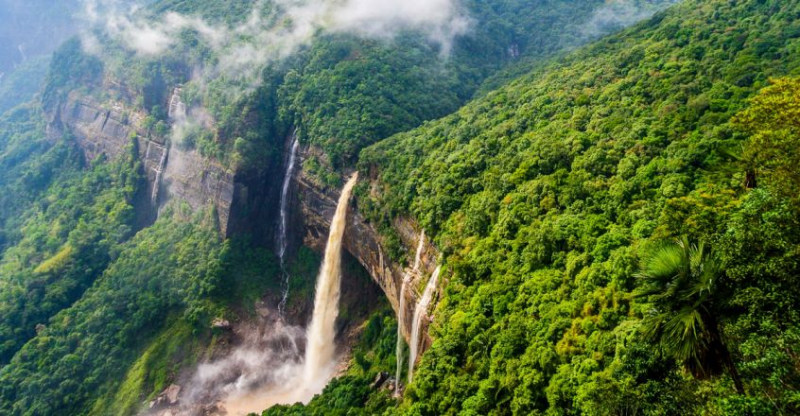
Nohkalikai Waterfall 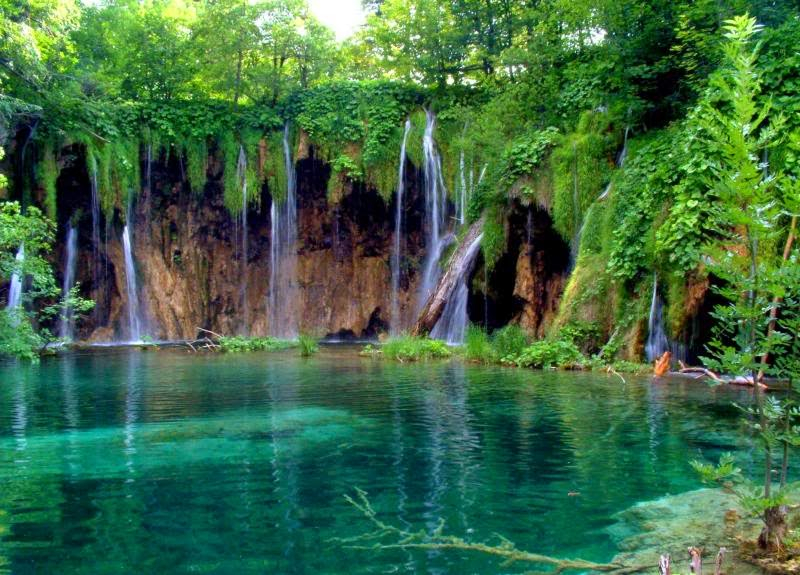
Nohkalikai Waterfall -
It is nearly impossible to resist a trip to a nearby waterfall for individuals who enjoy jumping into flowing streams or standing beneath the ferocious power of water pouring down from a height. Bhimlat Falls is a natural oasis in a desert environment. It is a fantastic weekend retreat because it is situated in Bundi, which is conveniently located 206 miles from Jaipur. The water flows into the sea-green lake at the base of the fall after falling from a height of 60 meters. Everything in Rajasthan, including the gushing water, is beautiful despite the parched desert landscape.
You will have to drive your way to this splendid waterfall by crossing the longest tunnel in Rajasthan. No travel map suggests that there are two waterfalls in Bundi and one of them is Bhimlat waterfall. It is said earlier that tigers used to walk within the Bhimlat area and people could watch them from the top. Bhimlat falls are best visited during monsoon. There is nothing more beautiful than watching such wonders of nature falling from such a great height.
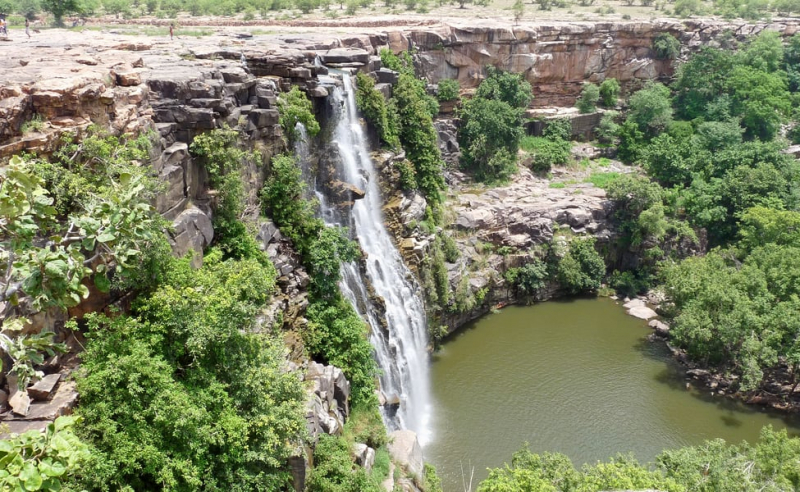
Bhimlat Falls 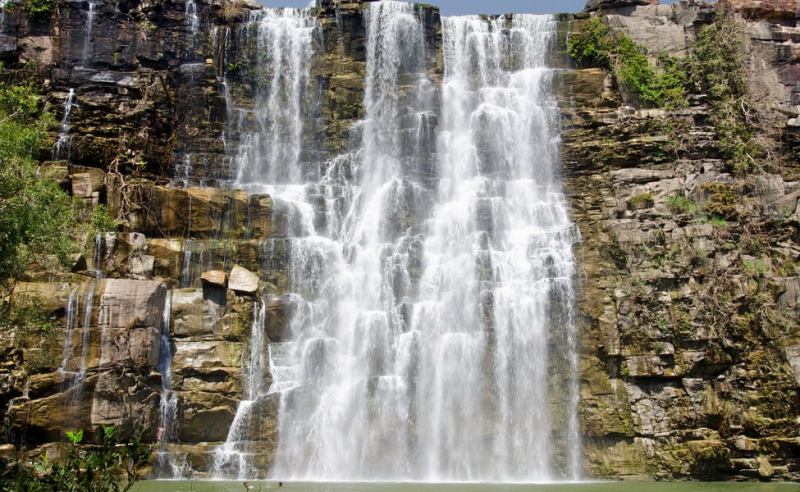
Bhimlat Falls -
The Irupu Falls are situated in the Brahmagiri Range in Karnataka, India's Kodagu district, which borders Kerala's Wayanad district. On the road to Nagarhole, it is a freshwater cascade that is located 48 kilometers from Virajpet. The name of the Cauvery River tributary that rises from the falls, the Lakshmana Tirtha River, inspired the other name for the falls, the Lakshmana Tirtha Falls. From these falls, a woodland trail leads to Southern Kodagu's Brahmagiri Peak. Irupu Falls is a popular tourist destination and a place of worship. On the way to the Falls, the Rameshwara Temple, a well-known Shiva temple, is located on the banks of the Lakshmana Tirtha River.
The monsoon season is the best time to visit the waterfall because it is when they are at their most spectacular and full of water. Irupu is located 260 kilometers from Bangalore, 240 km from Mangalore, and 120 km from Mysore. It is 48 kilometers from Virajpet. The Gonikopal to Nagarhole National Park roadway, which departs off the Kutta Road after Srimangala, offers access to the Falls.
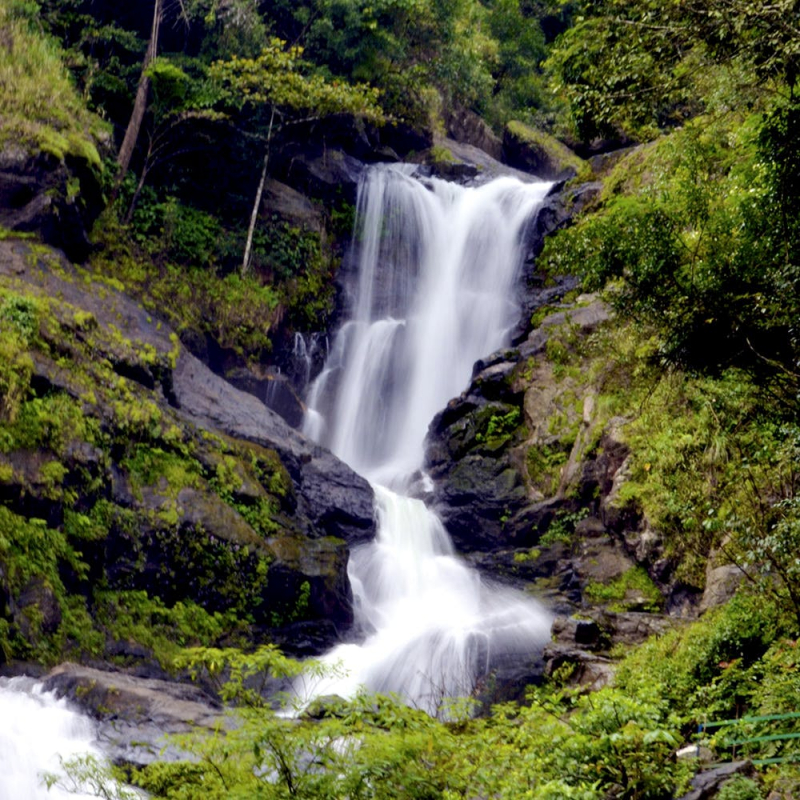
Irupu Falls 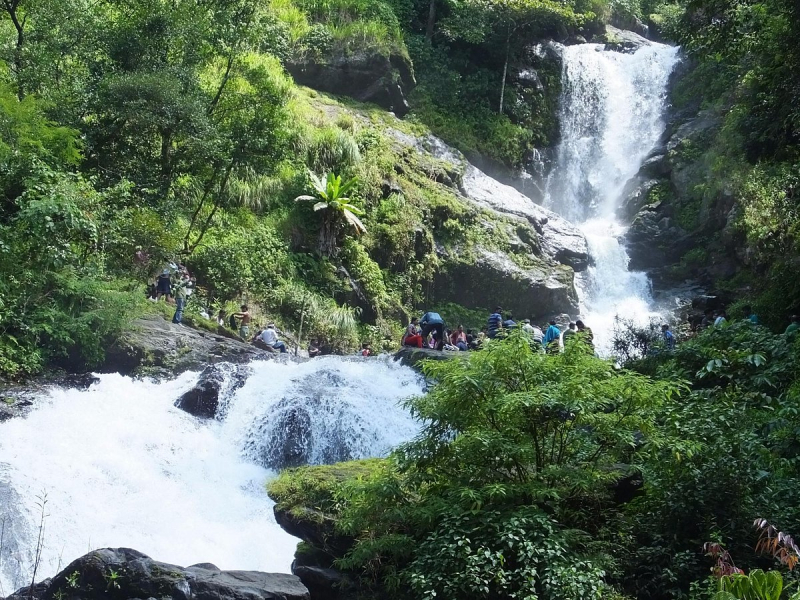
Irupu Falls -
You have to add Talakona Waterfall to your itinerary if you're going to Tirupati. The Talakona Falls are located in the Sri Venkateswara National Park in the Chittoor District of Andhra Pradesh, close to Tirupati. The highest waterfall in Andhra Pradesh is 270 feet (82 meters) high. The Lord Siddheswara Swamy Temple, which is close to the waterfalls, was also well-known to Talakona.
Talakona is located in the Yerravaripalem Mandal Chittor District's Nerabailu Village. It features a resort with thick trees and fauna and is well-known for its waterfalls. In 1989, this area was designated as a biosphere reserve because of the diverse range of flora and wildlife there. Tala, which means head, and Kona, which means hill, are joined to form Talakona Waterfall, also known as "the head of Seshachalam hills". The Tirumala mountain ranges are where these mountains begin.
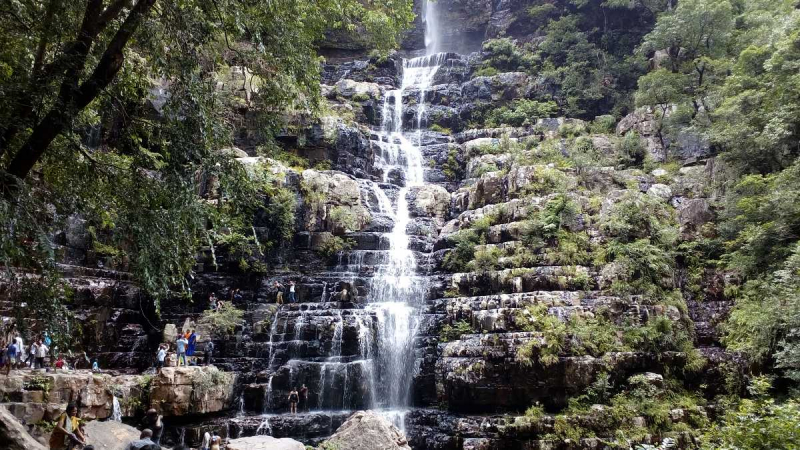
Talakona Waterfall 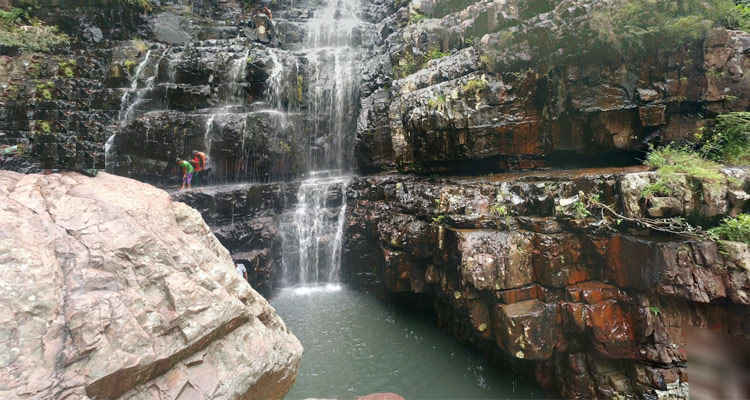
Talakona Waterfall -
The glory of Karnataka, India, is the magnificent milky-white Mallalli Falls, which is located in the northern Kodagu region. Tourists are amazed by the magnificence and beauty of the cascading waterfall located 26 kilometers outside of Somwarpet at the foot of the Pushpagiri Hills. It begins where the Kumaradhara River plunges more than 1000 meters, after which it follows a natural path that leads to the Arabian Sea. Enjoy the landscape, take in the grandeur of the lush woods, and see the river as it descends from the source of Mallalli Falls.
The most popular tourist destination in Coorg, Karnataka, is Mallalli Falls. It is one of the fascinating natural wonders that is commonly mentioned alongside Abbey Falls in Kodagu. Like any other body of water in the state of Karnataka, Mallalli Falls' magnificent beauty cannot be compared. During the rainy season, Mallalli Falls is at its most spectacular, cascading from above in a series. When hiking along the breathtaking Western Ghats trail, you can feel the cold mist of water caressing your face as you come closer to Mallalli Falls. The best time to visit Mallalli Falls is during the monsoon season. You will always remember the thrill of taking a jeep ride to Mallalli Falls.
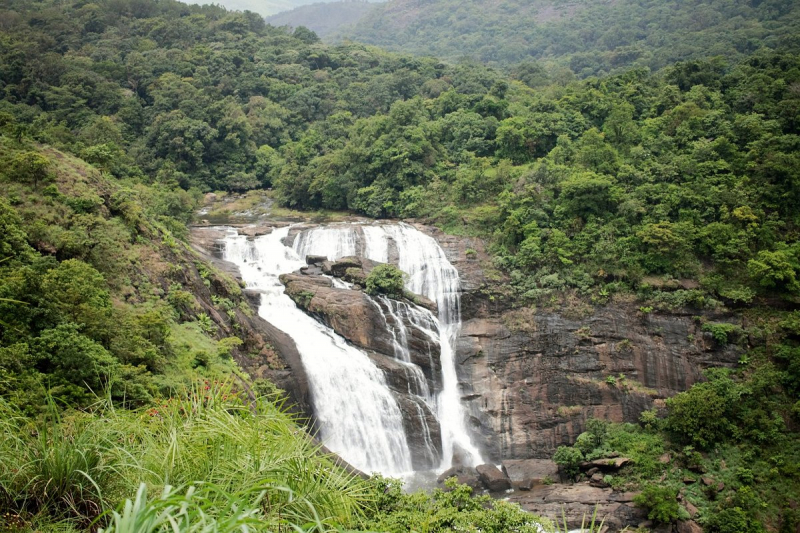
Mallalli Falls 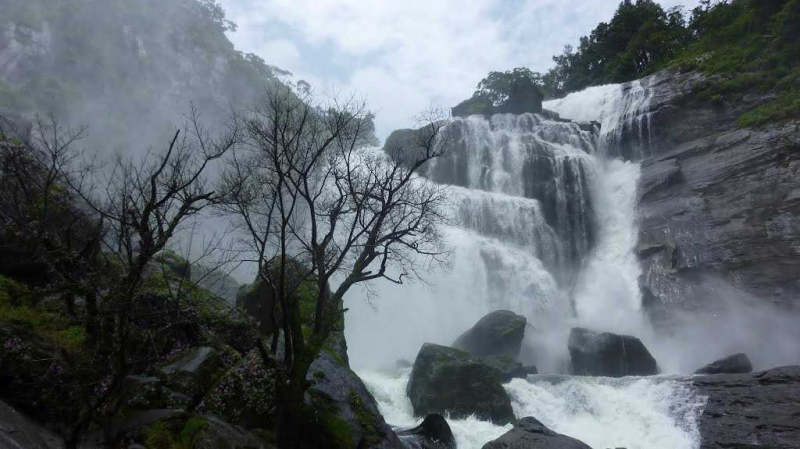
Mallalli Falls -
Hogenakkal Falls is a waterfall in South India that can be found on the Kaveri river on the border of the Karnataka and Tamil Nadu districts of Chamrajnagar and Dharmapuri. It is 46 kilometers from the district offices in Dharmapuri and 199 kilometers from those in Chamrajnagar. It is also 200 kilometers from Coimbatore, 127 miles from Bangalore, 181 km from Mysore, and 344 km from Chennai. It is a popular tourist destination known for its bathing places, and boat rentals, and nicknamed the "Niagara Falls of India". The carbonatite rocks at this location are regarded as among the oldest in the world and the oldest in South Asia.
Soon after the monsoons, when the river is in full flood, is the ideal time to come. However, some visitors choose to go off-season to avoid the crowds. Hogenakkal allows boating during the dry season because the falls are not powerful enough to obstruct the movement of the boats. The primary source of revenue for boat owners is this. There are also a lot of people swimming and taking baths there.
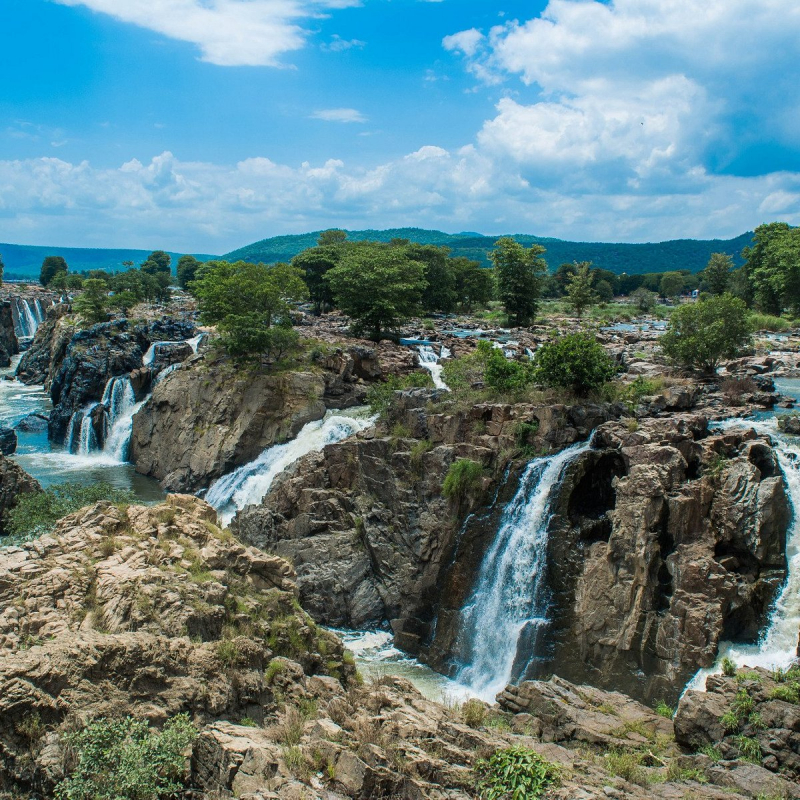
Hogenakkal Falls 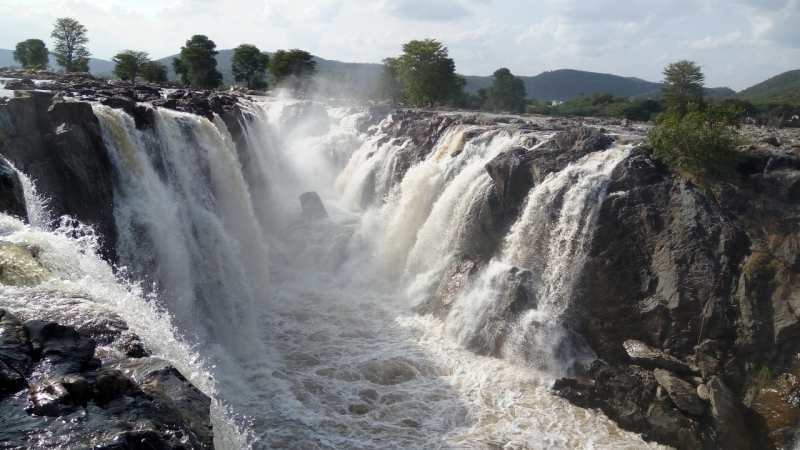
Hogenakkal Falls -
The generous character of Odisha allows visitors to enjoy the sight of Barehipani, the second-highest fall in all of India. The Simlipal National Park, located in the Mayurbhanj area and famed for housing wild elephants, gaurs (Indian bison), Bengal tigers, and causing, shares terrain with this waterfall. This waterfall may flow over the powerful Meghasani mountain because of the River Budhabalanga. One of the most intriguing features of this well-known waterfall in Odisha is its two drops, the tallest of which vary in height from 259 m to 399 m from a cliff.
Additionally, the presence of this well-liked tourist attraction amidst the vibrant vegetation of the area makes the experience even more exciting and delightful for people who are visiting the national park in hopes of spotting the Bengal and White Tiger. The height of Barehipani Fall's splendor and the crashing sound it makes as it descends are two things that travelers love to stop and admire. Another well-liked waterfall in the state is Joranda Falls, which is located inside the Simlipal and boasts the distinction of being the 19th highest waterfall in the nation.
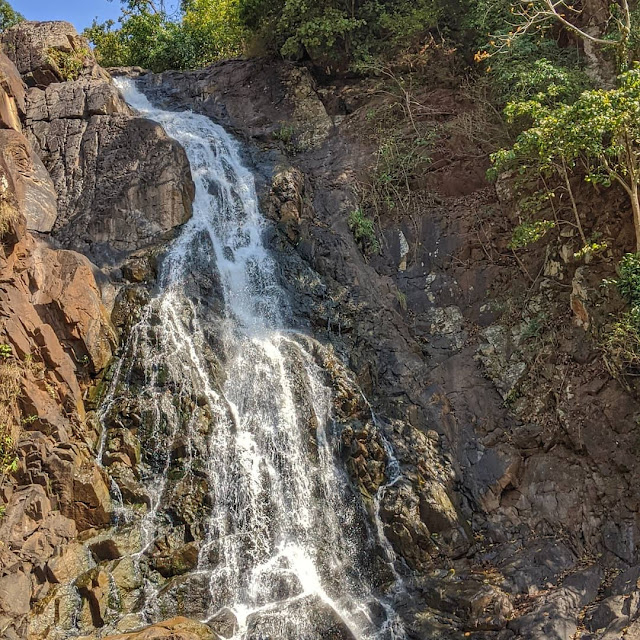
Barehipani Waterfall 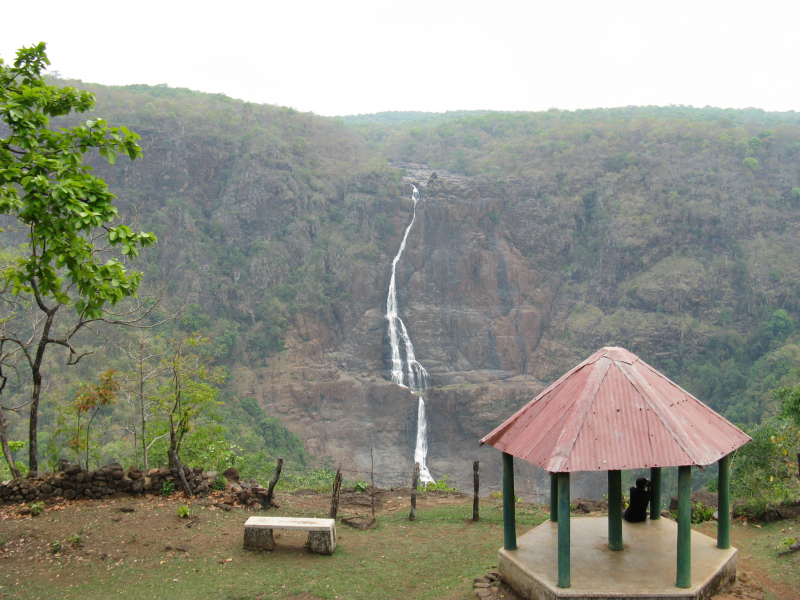
Barehipani Waterfall

















